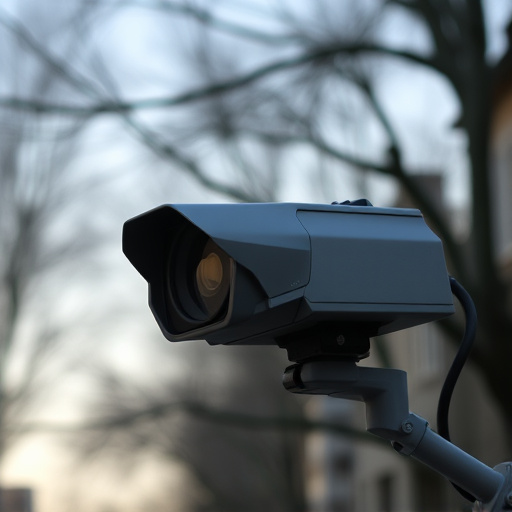Undetectable wireless security cameras, disguised as everyday objects like light bulbs or fire alarms, offer discreet and remote surveillance solutions. Leveraging optics and infrared technology, these devices capture high-resolution footage without drawing attention, enhancing security while maintaining aesthetics and privacy. Meticulously designed and engineered, they are integrated into environments through technologies like IR LED lighting and specialized sensors, with rigorous testing to ensure functionality and discretion. However, their rise also presents significant privacy risks, necessitating advanced signal detection, encryption, and regulatory frameworks for mitigation.
Undetectable wireless security cameras have emerged as a significant concern for privacy advocates, raising questions about surveillance practices. This article delves into the world of hidden camera identification using light-based tests. We explore the science behind this methodology, offering insights into how it works and its practical applications. From understanding the technology to implementing countermeasures, we provide a comprehensive guide on navigating this modern privacy challenge. Discover effective strategies to enhance your security and protect personal spaces from these elusive devices.
- Understanding Undetectable Wireless Security Cameras
- The Science Behind Light-Based Identification
- Practical Implementation and Testing Methods
- Enhancing Privacy with Effective Countermeasures
Understanding Undetectable Wireless Security Cameras
Undetectable wireless security cameras have revolutionized surveillance technology, offering discreet and remote monitoring solutions. These advanced devices are designed to blend seamlessly into their surroundings, often appearing as everyday objects like light bulbs or fire alarms. Their wireless capabilities eliminate the need for complex wiring, making them highly versatile and easy to install in various settings, from homes to businesses.
The ‘undetectable’ aspect refers to their sophisticated design that counteracts traditional camera detection methods. Unlike conventional cameras with visible lenses or reflective surfaces, these devices employ advanced optics and infrared technology to capture high-resolution footage without drawing attention. This makes them particularly appealing for situations where discretion is paramount, ensuring peace of mind and enhanced security without compromising aesthetics or comfort.
The Science Behind Light-Based Identification
The science behind light-based identification for undetectable wireless security cameras is a fascinating blend of optics and technology. This method leverages the unique properties of light to recognize and distinguish between different camera models, even when they are hidden or disguised. By analyzing the patterns, wavelengths, and intensities of light emitted from these cameras, specialized software can detect subtle differences that set apart one device from another, making it a powerful tool in enhancing security measures.
Light-based identification works by capturing and processing electromagnetic radiation that is often unintentional or unavoidable in everyday environments. This includes analyzing the light signature left by hidden cameras, which can reveal information about their specifications and capabilities. The challenge lies in extracting this data without raising suspicion or triggering alarms, ensuring the continued effectiveness of undetectable wireless security cameras as a whole.
Practical Implementation and Testing Methods
The practical implementation of undetectable wireless security cameras involves careful design and precise engineering to ensure they blend seamlessly into their surroundings while maintaining optimal performance. These cameras are strategically integrated into everyday objects like light fixtures, streetlamps, or even artwork, making them nearly invisible to the naked eye. Advanced technology, such as IR LED lighting and specialized sensors, allows these devices to capture high-quality footage without drawing attention.
Testing methods for undetectable wireless security cameras are multifaceted, focusing on both functionality and discretion. This includes rigorous testing of image and video quality under various lighting conditions, ensuring robust connectivity, and validating the camera’s ability to remain hidden from view. Specialized simulations and real-world trials are conducted to assess the system’s overall reliability and effectiveness in different environments. The goal is not only to confirm the camera’s technical capabilities but also to prove its undetectability, thereby providing a comprehensive security solution without compromising aesthetics or privacy.
Enhancing Privacy with Effective Countermeasures
With the proliferation of undetectable wireless security cameras, safeguarding privacy has become a paramount concern for individuals and organizations alike. These tiny yet powerful devices, often disguised as everyday objects, raise significant ethical questions about surveillance and data collection. However, awareness and proactive measures can significantly mitigate these risks.
Implementing effective countermeasures, such as advanced signal detection technologies and encryption protocols, can help identify and neutralize hidden cameras. Additionally, promoting transparency and regulatory frameworks that govern the use of such devices is crucial. By empowering individuals with knowledge and tools to protect their privacy, we can foster a more secure and ethical digital environment while acknowledging the legitimate needs of security monitoring.
Undetectable wireless security cameras, while posing a significant privacy threat, can be countered through advanced light-based identification techniques. As we’ve explored, understanding these hidden devices and their functionality is key to developing effective security measures. Practical implementation and testing methods play a crucial role in enhancing privacy, ensuring that both technology developers and end-users are equipped to navigate this evolving landscape. By staying informed and adopting robust countermeasures, we can safeguard our personal spaces and maintain a balance between security and individual freedoms.
